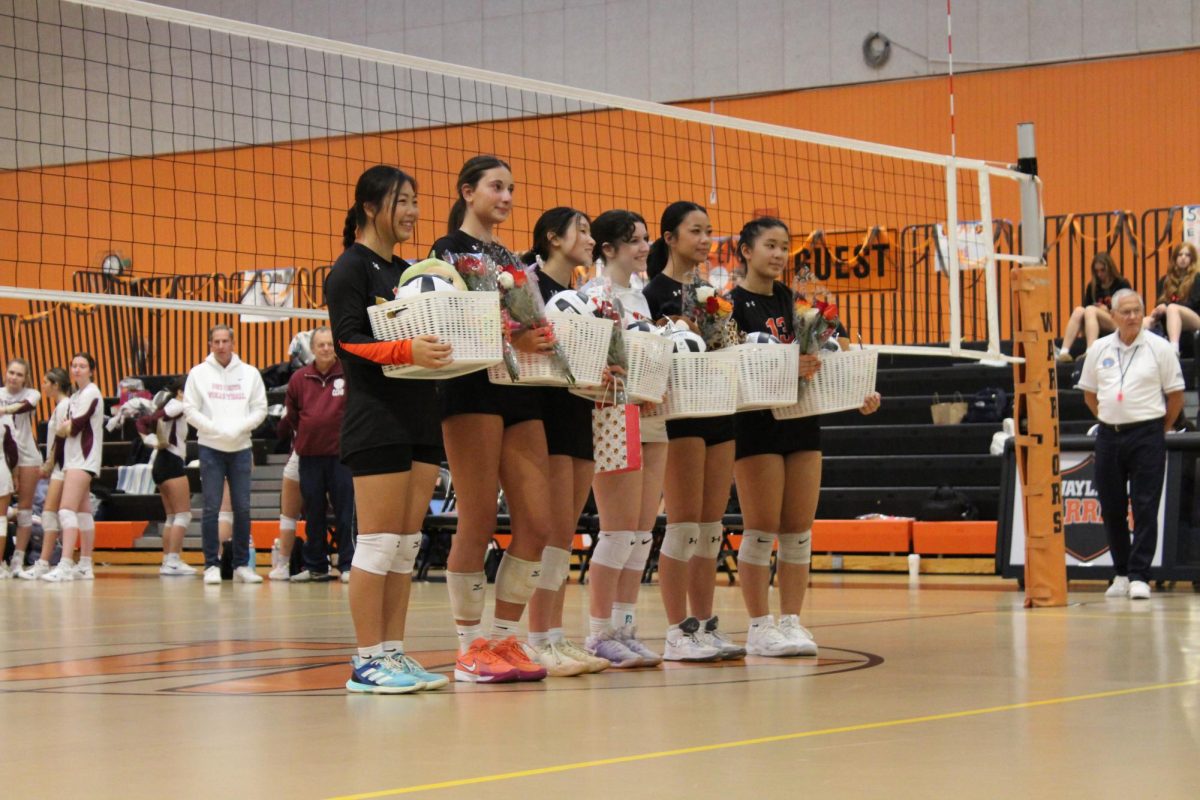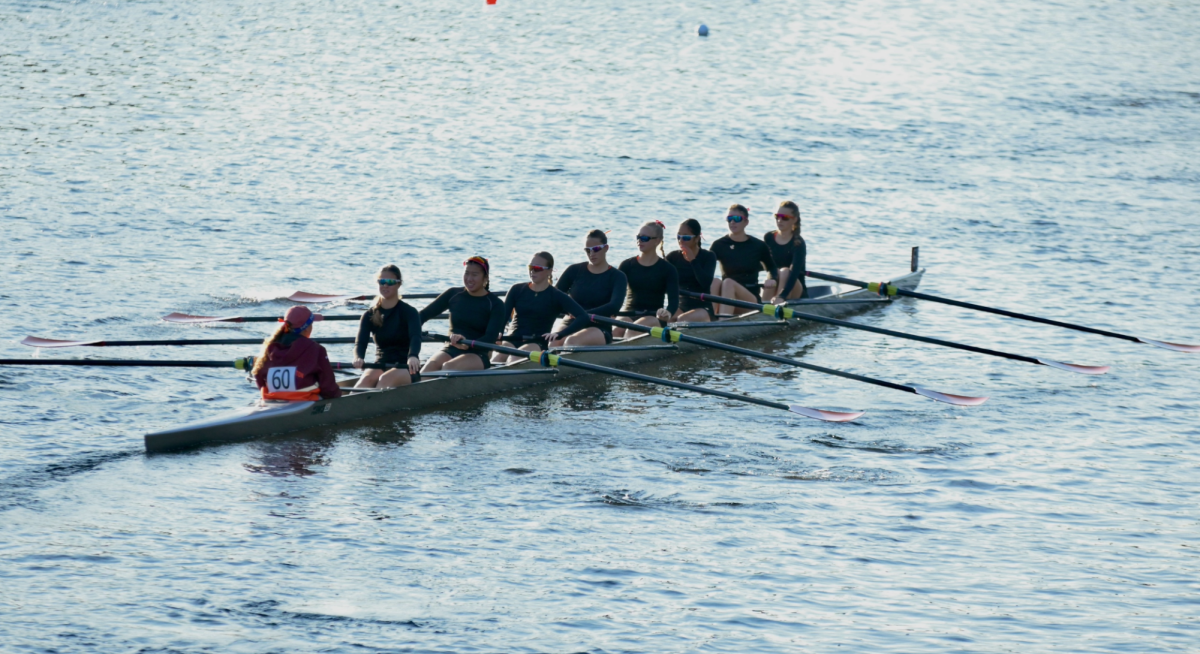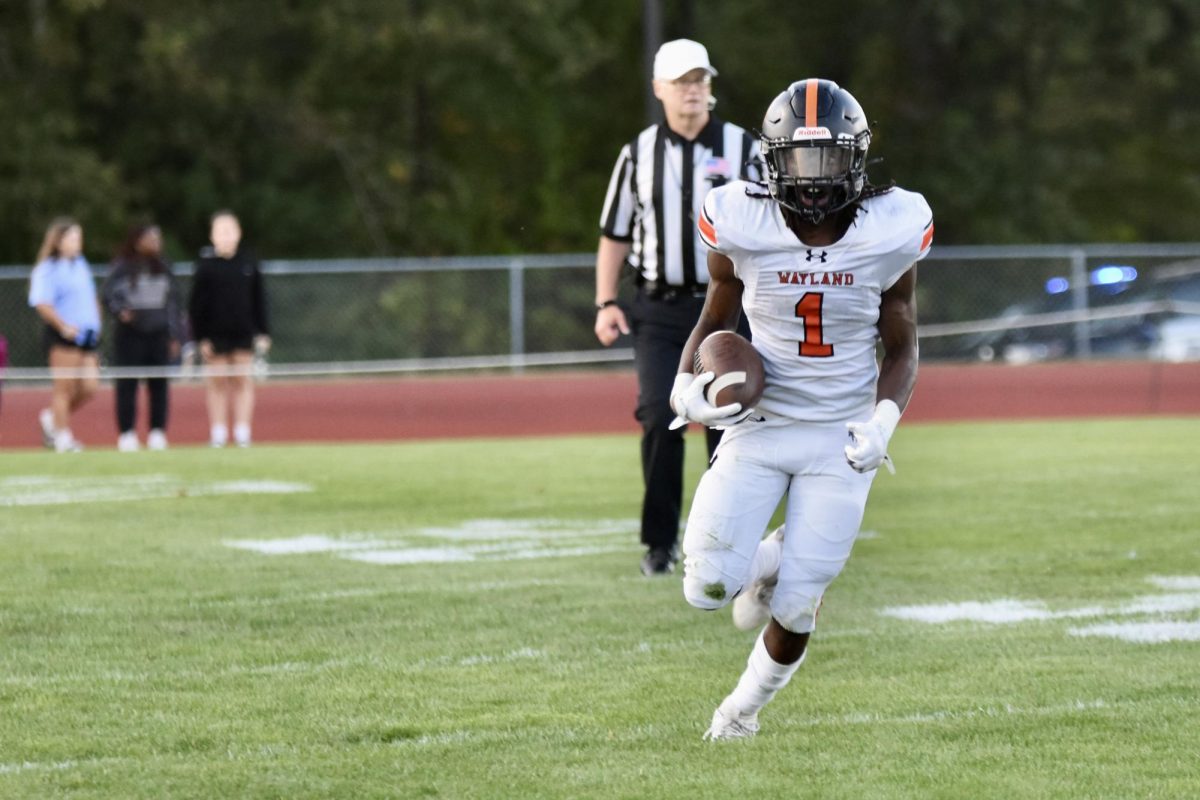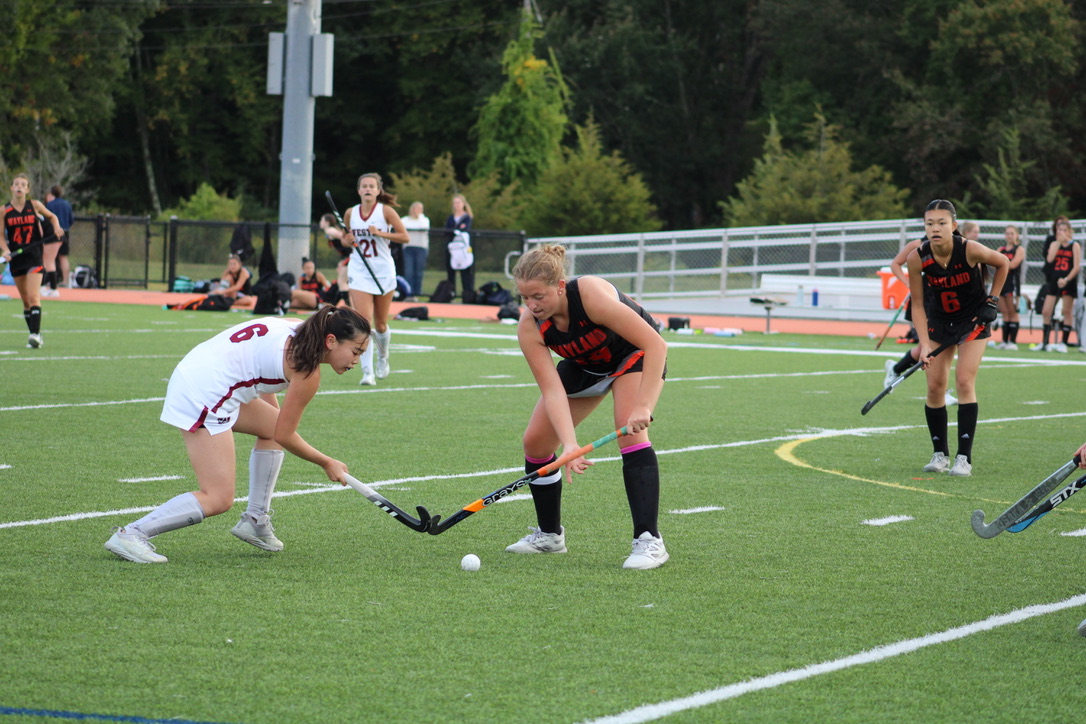Indoor track races towards the Fall II season with adjusted rules
Credit: Michael Nechipurenko
The WHS field house is typically a space in which runners practice and compete during the winter months. The MIAA opted to move this year’s winter track season outside as a result of the COVID-19 pandemic, but athletes are optimistic regardless. “I hope with this extra time I can get some more quality training in,” senior indoor track runner Zachary Campana said. “I think that it makes me more excited to compete in the upcoming spring track season with a brand new track to run on, [and I will have] a lot of time to perfect my form and abilities in the 110m hurdles, my event.”
During a typical athletic year, there are three sports seasons, during each of which a different WHS running group competes. Typically, the cross country team runs in the fall, and then track athletes move inside for the winter before transitioning back outside for the spring months. This year, one of the most recent athletic responses to the COVID-19 pandemic was the “indoor” track season moving outdoors. As well as canceling all meets, the MIAA also elected to postpone the indoor track season—moving it into the Fall II timeframe—to minimize the amount of time athletes spent running in below-freezing temperatures.
For senior indoor track runner Zachary Campana, the idea of running outdoors is somewhat daunting.
“I think the biggest challenges for me personally are staying motivated with no indoor meets to look forward to, as well as battling the weather constantly,” Campana said. “Running outside in about 28 degrees and 20 [miles/hour] winds is not fun.”
Other athletes, however, are excited at the prospect of being outside more often, despite the frequent low temperatures during this time of the year.
“I think training in different temperatures is a positive because your body has to adapt, and it is better training,” junior indoor track runner Lucas Thompson said. “The only problem is if there is a snowstorm, then we can’t run outside and have to only use the parking lot.”
Still, others aren’t too concerned with the changes whatsoever. Some feel that the sport of track lends itself to the changes that have come.
“I think it will be a little bit challenging because of the weather and snow,” sophomore indoor track runner Eric Hiebert said. “[That said], overall, I think the good thing about track is that you just need a flat surface, so our performance should be just fine.”
One specific problem that athletes have been facing recently is the lack of availability on track surfaces. Large amounts of snow have covered the track for much of the last few weeks, meaning that athletes have been unable to access a critical practice space.
“Having snow everywhere has been an issue with actually getting onto the outdoor track as well as running anywhere other than the parking lot,” Campana said. “I hope that the weather will allow running in more places as the weeks move by, but who really knows with Massachusetts spring, we could have a freak snowstorm that drops a foot of snow in late April, or we could have a week [with] 70 degrees in mid-March.”
For many athletes, a bigger issue than the low temperatures is the fact that meets are not being held.
“I think the biggest challenge in track during COVID-19 will be that there are likely going to be no meets,” Thompson said. “There likely won’t be any competitions until the spring, so it’s going to be harder to push myself to get faster when it’s so far away.”
Given that athletes will not attend meets, many are using their time to prepare for the spring track season.
“I think that a lot of people are treating this half-season as either an excuse to get outdoors and get some exercise outside, or, as I am treating it, an extended preseason for outdoor track which starts later this spring,” Campana said. “If I’m being honest, I don’t think the team that is practicing right now is going to be the same team that will be around for the spring season, and hopefully, I’ll see some new faces join for the outdoor season once we are able to have meets again.”
Despite many of the drawbacks that accompany holding this year’s “indoor” track season, athletes are cherishing the opportunity to run regardless.
“[Even though there are] changes, just having a season this year makes me more excited to compete,” Hiebert said.
Your donation will support the student journalists of Wayland High School. Your contribution will allow us to purchase equipment, cover our annual website hosting costs and sponsor admission and traveling costs for the annual JEA journalism convention.

Michael Nechipurenko, Class of 2023, is a first year reporter for WSPN. He plays for the high school’s soccer team. Outside of school, he enjoys reading...


























![The WHS field house is typically a space in which runners practice and compete during the winter months. The MIAA opted to move this year's winter track season outside as a result of the COVID-19 pandemic, but athletes are optimistic regardless. “I hope with this extra time I can get some more quality training in,” senior indoor track runner Zachary Campana said. “I think that it makes me more excited to compete in the upcoming spring track season with a brand new track to run on, [and I will have] a lot of time to perfect my form and abilities in the 110m hurdles, my event.”](https://waylandstudentpress.com/wp-content/uploads/2021/03/LhdlNQkrC38bacjCayjIM8RGeB3kN2IrGubw3pOl-900x600.jpeg)